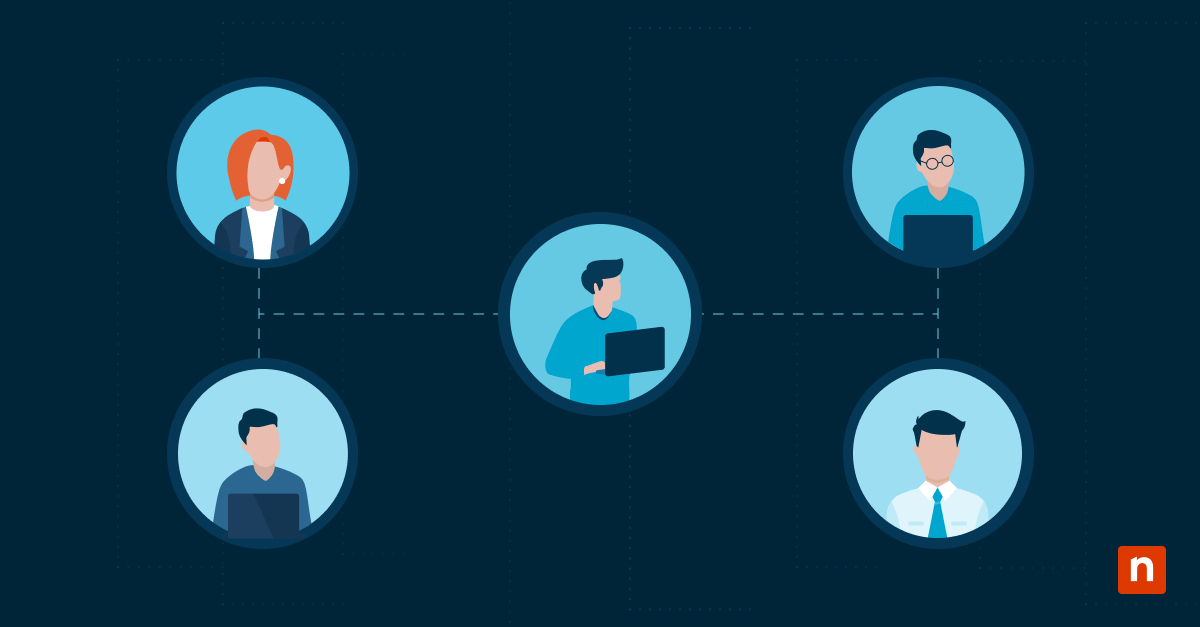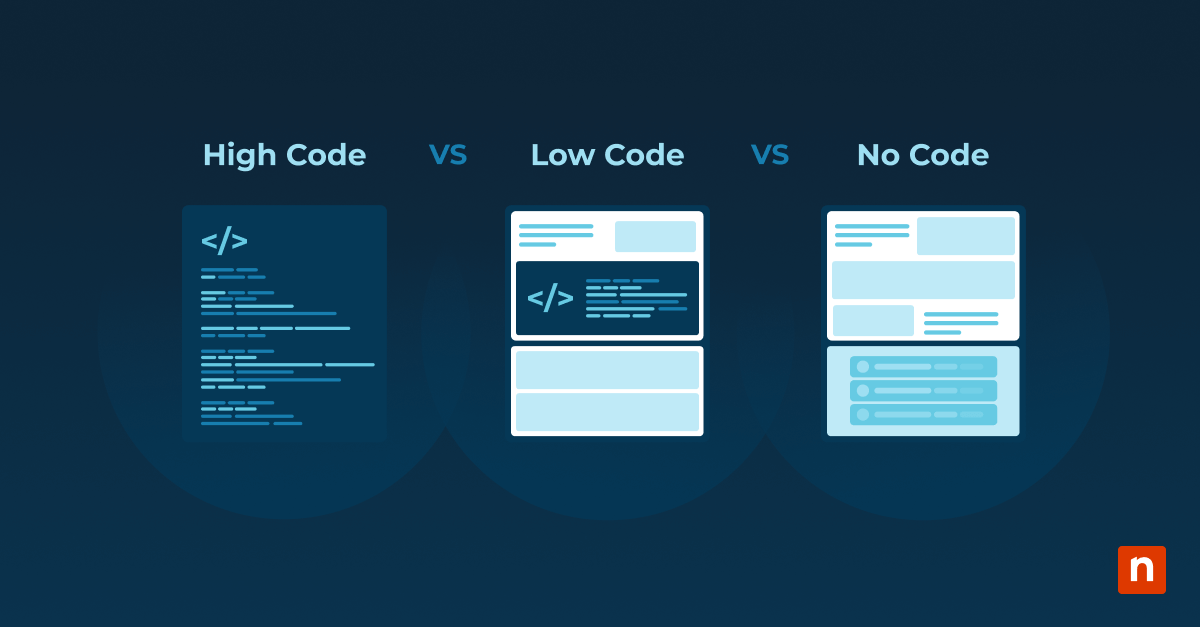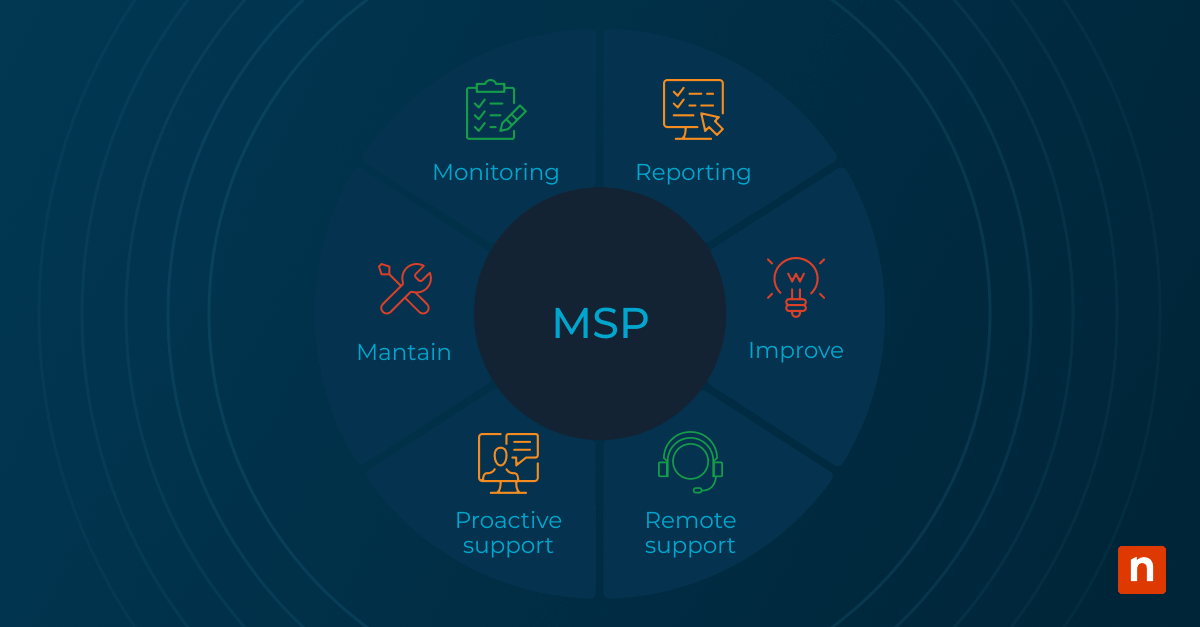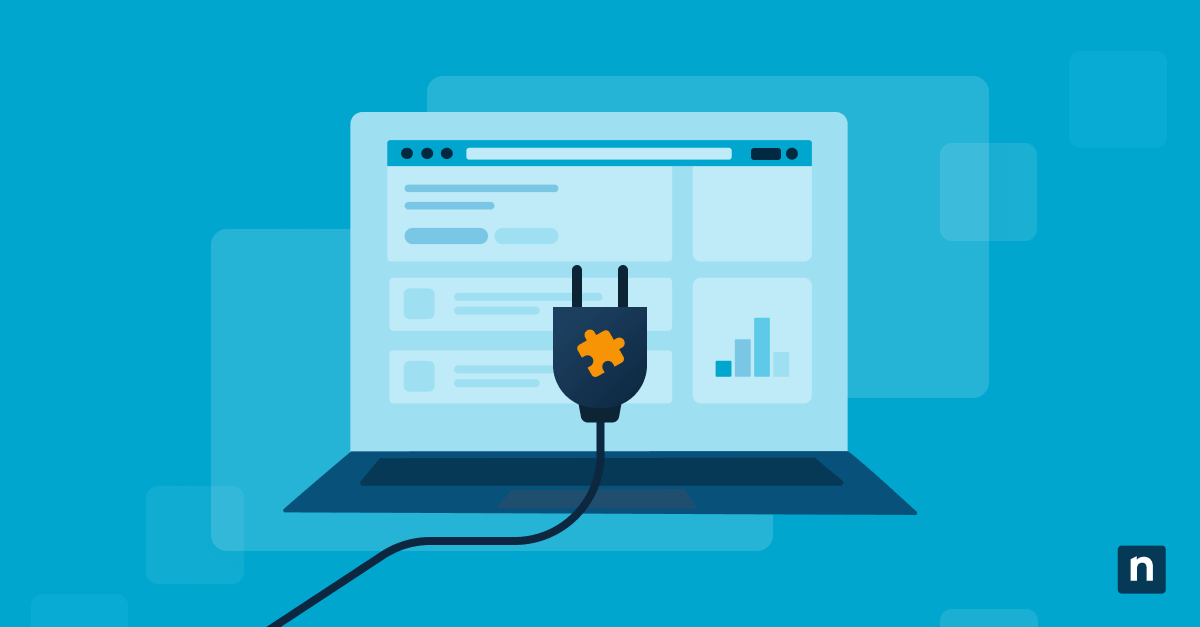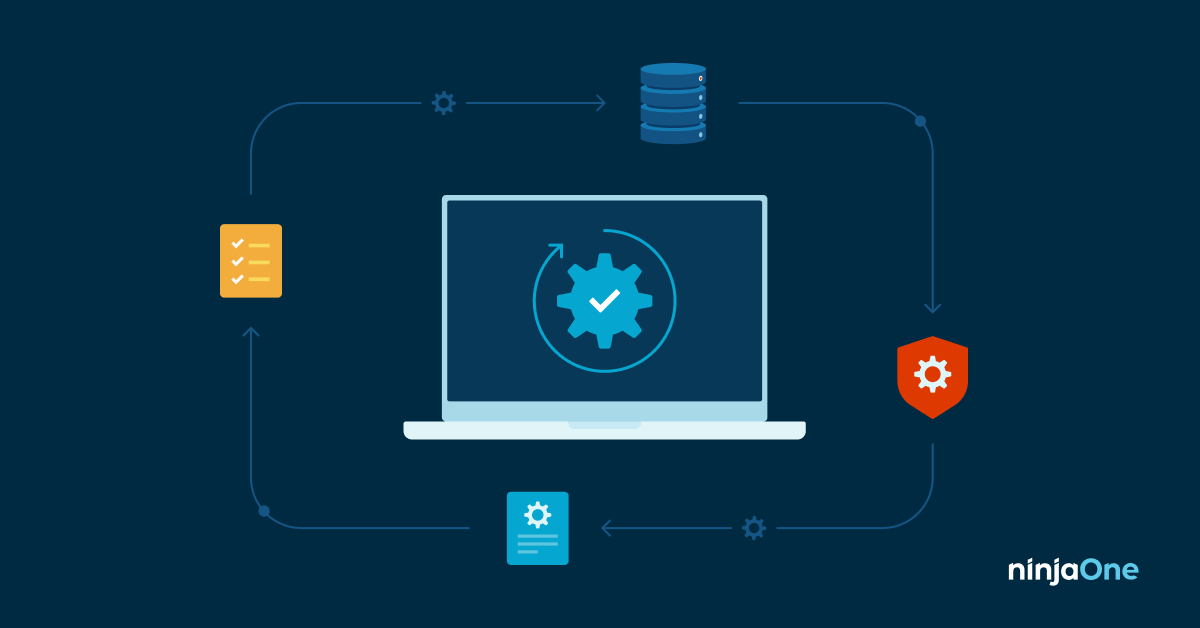Author, renowned speaker, and pioneer of managed services, Karl Palachuk, shares transformative stories from his past MSP businesses, landmark moments that challenged him to do business differently, and his take on the benefits of adding personality to your business.
To say Karl Palachuk has played a role in the growth of managed services would be a massive understatement. His books and pieces of training have influenced thousands of IT business owners and helped them successfully make the leap from break-fix to more scalable and profitable operations. Our own Channel Chief Advisor Tom Watson credits Karl for setting him on the right path to growing and selling his business.
Karl has owned several small businesses, including two very successful Managed Service companies in Sacramento, CA. He received his first Microsoft certification in 1995 and his first MCSE in 1999. He was an active, hands-on Systems Engineer until January of 2017.
He now provides coaching and consulting services to IT professionals of all sizes.
In this episode of MSP Breakthrough, Karl opens up with NinjaOne’s Jonathan Crowe and NinjaOne Channel Chief Advisor Tom Watson to discuss the evolution of the IT business, the power of solid contracts in growing a MSP and offers valuable advice on adding a personal brand to your business.
Listen
Like the show? Please consider supporting it with a review. It will help a lot!
You can review/subscribe at either of the following:
Watch
Read (transcript)
Announcer: This is “MSP Breakthrough,” where successful MSP owners walk us through the pivotal moments that put them over the top.
Tom: Now, Karl, thanks for joining us today. So, this is the NinjaOne “MSP Breakthrough” podcast series. And what we do in here is we talk to current and former MSP owners about breakthroughs in their MSP that allowed them to scale that business. So, it might be a little different today because we might want to go in some other areas, we might want to talk about, you know, one of my favorite topics is, what would you do today? But also you got all this experience, you owned a couple of MSPs. And we can talk about the major things that happened with you that allowed you to basically scale those up and then sell them.
Contracts, contracts, contracts
Karl: All right. Well, I’d say one of the biggest things that happened to me was that early on, I just started signing contracts, I had managed major IT setups for major corporations. And I didn’t know that people didn’t sign contracts in this industry. And so, at the beginning, I signed contracts. And that seems like a small thing. But contracts are not about what you deliver, they are about the relationship. And one of the things I think people don’t know when they start out is that you think you’re in IT, but you’re not, you’re in business. And as soon as you start treating it like a business, then suddenly the money starts to flow.
And time and time again, you meet people who have been doing this a long, long time, and they’re not making money. And invariably, they think you’re in IT instead of being in business. And so, they don’t manage that side of the relationship. They just want to go fix stuff, which is cool. But if you just want to go fix stuff, you should probably be an employee. If you want to go make money, well, then you should start a business. And you know, if people think they’re going to make money, but we also think we’re going to build 2,000 hours a year.
Tom: Karl, that reminds me of something, I’m pretty sure I remember this one of your books, people get at this point where they’re trying to do managed services and they just get stuck and they don’t put anything out there. And it’s kind of you just said, get contracts signed, get an offering out there. Am I right? Am I remembering something from one of your books here?
Karl: Yeah. I mean, a lot of people get stuck because they kind of think they want to do it, but they start building their list, you know, the standard three-tiered list and they get kind of stuck figuring that out. I have worked with people that spent a year trying to figure out what they’re offering is, and I almost feel like, who cares what you’re offering is, offer something, because you can change it, right? You’re not actually etching this in stone, you’re printing it on a piece of paper, and you can change it next week. So, you know, if you offer something and it sucks, offer something else. You should always be fine-tuning your business.
“I don’t think I ever went three years without changing what we offered, because we’re in technology. The world changes on a regular basis. So, you just have to have this mindset of, “better” can be the enemy of “done,” right? People looking for perfection just slow themselves up.”
Jonathan: Absolutely.
Tom: That’s just a great point. I think it’s, you know, you sit there and you’re like, wow, should I do this agreement at this price? Or is this the right price? And you get stuck too much in these details. And the fact is the where you’re really going to learn how to do managed services is by making some kind of offering, getting a signed contract from someone, having a stack. And then based on that, you’re going to be able to figure out, that was not quite right, I’m not going to do that again, or I’m going to change this out in the stack or I’m going to contract this a little bit differently. But the main things I think I learned from you are, of course, get paid upfront, make payment easy for them, have an offering, and communicate that to the client in a contract that they sign. And then from there, start making your tweaks to the next one.
“There’s nothing more profitable than building a business based on your most favorite clients.”
Karl: Right. Well, the other thing to remember is people like doing business with people. And you know, when I started my second managed service business, I went around to people who had been my absolute best clients in my first managed service business. And, you know, I said, “Here, I just need you to sign this, and here’s what we’re doing differently.” And I just told them what it was. And at the end of the day, the only question is, do you want to do business with me, as your IT service provider?
And if the answer is yes, sign on the bottom line, right? Your clients love you already. So, when you go to them and say, “We’re just taking a step up in professionalism,” I think it’s very easy. You know, I never really had any problem convincing people to sign when we started making everybody go on to a contract because they all wanted to do business with us.
Jonathan: Hey, Karl, you mentioned that you had a second MSP. Can you talk a little bit, just give some background around how that came to be? What was the first one? What happened with that? What was the transition?
Karl: Well, so I sold my first managed service business. And what I did, part of the buyout was I got a payment of, obviously, every month to be the core advisor to the guy who bought it, right? So, basically, we switched the name tags, but we both sat at the same desk and did the same thing we’ve done before. I managed major projects, I managed his public relations and marketing, and I managed all of the big migration projects. And I like to say that I was his outsource personality, right? I dealt with the client, you know, side of things. And then after a couple of years, he sold that business. And so, I was like, “Okay. Well, you know, that’s the end of that. It’s all good.”
And then I had former clients who came to me and said, “You know, this new guy, we just can’t handle him.” And, you know, I’d been out of the business for, you know, technically, for a few years. And so, I decided to create a business literally based on the best customers I had from the first business. They all took my advice, paid full price, scheduled regular roadmap meetings to figure out what their technology was doing and where it was going. And they were perfect clients. They were my top-tier clients. And so, I build a business based on them. And I can tell you, there’s nothing more profitable than building a business based on your most favorite clients. Not necessarily the most profitable but your favorite clients because you will be profitable with them.
Challenged to do business differently
Jonathan: It’s interesting, you know, doing this series, there’s always these breakthrough moments people have. And by definition, that means that there was hurdles, there was challenges, there were roadblocks, right? No one we’ve talked to had the simple story of, yeah, I started up, everything went great from the get-go, and we made a ton of money. And we sold and it was amazing. There’s always some kind of challenges that crept up. And a lot of times it has to do…getting around those challenges, it seems like it’s either had to do with some external circumstances. Tom’s example. There’s the Great Recession forced him to do business differently, put him on a path of selling his business.
And other examples, it’s really kind of tied into the revenue marker. There seems to be right around, like, a half-million, getting past a million, people talk about it in those terms. Can you thinking back to your, maybe not your first business or maybe your second one, was there anything like that, whether it was an external factor that forced you to do things differently, or whether you had these natural moments that you can kind of pinpoint where you had to start doing business differently?
Karl: Well, one time that really stands out, I wasn’t forced to do things differently but I saw it as a watershed moment to do things differently. And that was way back in 2000 when Microsoft introduced Active Directory. There were a lot of people in our industry who literally said, “I’m not going to learn this new technology.” And as weird as that sounds today, right, the same thing happened when we moved to the cloud. The same thing happened when the world was taken over by Office 365. The same thing is happening with people who don’t want to learn Azure Active Directory, right? At every stage, there are people who opt themselves out of the market. And what I did in 2000, that was a real turning point for my business is I said, “I will only hire Microsoft Certified professionals, and we will be focused on education. So, we will not head to anybody on our team who is not future-focused and willing to learn.” And so, basically, it put us at, not necessarily that top of technology but it put us up there enough that we can say, “Look, our competition might have one certified person on staff. We have everybody certified.”
When I had 12 technicians, every one of them had at least one Microsoft certification. Another big thing and Tom and I had this in common is 2008, 2009 sucked. I had a bunch of people who were somehow related to the housing industry, you know, if they were selling houses, they went out of business. If they were building houses, they went out of business. If they were providing services to the housing industry, they went out of business, or they had tough, tough times. And so, that on top of a divorce, 2009 really sucked for me. I actually wrote a blog post, like good riddance to 2009, you know, let’s move on from here. But you know, in your life, you will have tragedies, whether it’s divorce or the death of parents or a personal health crisis, stuff happens. And, you know, you can choose to see that as a mountain you have to climb or as a speed bump. And it’s easy to say and hard to live through. But, you know, if you’re going to be in business for 10, 20 years, you’re going to go through a lot of stuff, and you got to figure out what’s important and what’s not, and focus on what’s important, and let that drive your business.
“And again, in small business, we’re in a people business, and so your clients will gather around you and support you and be a part of what draws you forward in those tough times.”
Tom: I think that’s great. Absolutely. You know, I think that brings us to a point where we can talk about what’s next because this pandemic seems to be letting up a little bit in this country. I’ve gotten a lot of questions from MSP owners out there about how they’re going to do sales going forward, how things have changed. And so, it’s bringing up a lot of questions for people. What do you think is going to be a big differentiator, things that companies need to do in light of this pandemic ending? And are we going back to the way things were or what has changed enough that you have to change as an MSP owner?
“You can’t step in the same river twice.”
Karl: Well, you know, I do a podcast called “Killing IT,” with Dave Sobel and Ryan Morris. And Dave and I are always arguing about how much people are going to go back to the way things are. I think most people want to go back, you know, now you can’t go back, that’s the other thing is. I think, probably at least 30% of what’s happened, 20% or 30% of the change will stay. Zoom will be with us forever, online meetings, online sales will be with us forever. But when I say you can’t go back, you know, there’s an old saying, “You can’t step in the same river twice.” It’s not the same river, and you’re not the same person, right?
So, you want to go back, but it’s like, you can’t go back to what things were like in 2019. Just ransomware, artificial intelligence, machine learning have made the world evolve too much. There’s always new changes coming in, whether it’s the move to the cloud or the move to new technology, whatever it is, you have to always be going forward. I do think we have a huge opportunity to reprise the victories we had in 2020. The victory we had in 2020 is that our industry stepped up and helped our clients get remote, do it effectively, get the equipment they needed to, work from home, do Zoom meetings, and all that. And now the next thing is I think every single person listening to this should be scheduling a meeting with every one of your clients to say, how are we getting back to the office? Will it be in stages? Are you coming back at all? Will it be one department at a time? Do you need a Zoom set up in your conference room, right? What technology changes? Have you figured out that you don’t really need that server in the next room and we can put it in the cloud? Right?
“Whatever it is, you need to have a roadmap meeting and with luck, you will get your clients to start having regular meetings about their technology. And this is an opportunity more than has existed in many, many years.”
Tom: Well, I think that’s a great point is to schedule that with your clients. Because on top of getting back to business, it’s also I think that we probably turned a corner and how we’re going to handle safety and not getting sick and those kinds of things, and listening to your client about what their expectations are from you as a company and doing on-site. And making sure that you’re kind of accommodating that a little bit and then maybe going back to yourself and looking at, well, our clients are concerned about sickness now than they weren’t before.
So, we’re going to put the following cleaning methods into place, and you know what? If you’re sick in our company, don’t come into work, that kind of thing. I think there’s just gonna be a lot of changes that we’re going to see, but you need to make it a combination of what the client’s expectations are, and then what your expectations are, and what you can reasonably do. And involve that in your contracts and your negotiations with clients, I think you get a lot of people on board. There’s probably a lot of money to be made by being very accommodating in these areas.
Karl: Right. And you know, I refer to them as roadmap meetings, a minimum of once a year, but ideally, two or three times a year, you should get together with your clients and just ask them, and this is a perfect opportunity to say, “Okay. So, how did you do in the pandemic or in the recession? Did you grow? Did you shrink? Is there new technology in your industry that I should be aware of? Are there trends? Did one of your competitors disappear? Did one competitor get bought out by somebody else?”
Right? What is going on in your business? And, you know, obviously, clients love to talk about their business and themselves. And you can just sort of figure out what that means for their technology. The best part about roadmap meetings is you can make decisions about the future without spending money today. So, you can say, “Okay. So, when that server is finally three and a half years old, we’re just going to move the data to the cloud, and we’ll put you on cloud storage.” That decision can be made six months in advance without spending any money, and so there’s a lot less pressure to have that discussion. And then when the day comes, you say, “Hey, let me just give you a quote on that.”
Creating a personal brand in the IT business
Jonathan: Hey, Karl, there’s one thing I wanted to ask you that goes back to an earlier part of the conversation. And you’re bringing up the very big point of people like to do business with people. That it’s not just selling technologies, this is a business and at the end of the day, where it’s business for people, right? How much of your businesses, whether it was the first one, the second one, all of them, did you see as kind of an extension of yourself really? Because it sounds like so much hinges on personal relationships, how your clients feel about you as a person. And then in the meanwhile, you’re also looking at building a business that’s bigger than just one person, in case you get hit by a bus or in the case of eventual acquisition, someone can come in and buy a business and have it run with you, maybe no longer in the picture. Although it sounds like it’s interesting when you talk about your first business, you stayed on for a while kind of so being that face. So, any advice about that in terms of people just getting started and how much they’re thinking about making this as an extension of themselves versus building for something that can be bigger?
Karl: Well, a great question. So, I did something I didn’t realize I was doing at the time, which is, I put a lot of my personality into my business. And I now believe as a maxim of how to proceed, that you should just create the business that you love, and then go find people who want to do business your way. And don’t have fear that people can say, “Oh, you know, you’re not fitting into this box or whatever.” A great example is that when I do marketing, I have somebody who helps me with marketing. So, 50% of her job is marketing. And I’ll say, “Well, what if we do this and this and this?” Her first question is always, does that fit with your brand, right? And she knows my brand because it’s how I prefer to show up in the world.
And so, I’m not super corporate, but I’m also not running around in flip flops and shorts, you know, at my client’s offices. So, I’ve got a way that I want to show up, and it takes a while for her to figure that out. But clients get it. And, you know, just no matter who, you look at how you pick somebody to buy a car from or to give you legal advice or to mow your lawn, and they’ve got a way that they do business and you find one that meshes with the way that you want to buy services and you do business. And so, it’s the most natural way for you to be is to be yourself, and then find people who want to do business with whoever you are. And you know, you’ve seen it at conferences, there are people who do magic and do juggling at sales meetings. And there are people who insist on doing a slide show and leaving the questions till the end. They are like dramatically different approaches. They’re both making money, right? The way I look at it, there’s 7 billion people in the world who haven’t done business with me. So, somewhere in that, there are the 15 or 20 people that I need to sign contracts with to have a profitable business.
Announcer: Thanks for listening to “MSP Breakthrough,” brought to you by NinjaOne. If you enjoyed this episode, please subscribe, like, or give us a review.
But wait, there’s more!
Thank you for checking out this episode and hope you enjoyed it. We’ve got a killer lineup of fantastic guests for future episodes, so make sure you don’t miss their breakthroughs by picking a subscribe option below:
If you liked this episode, please consider giving us a review. We’d love the feedback and really appreciate your support!
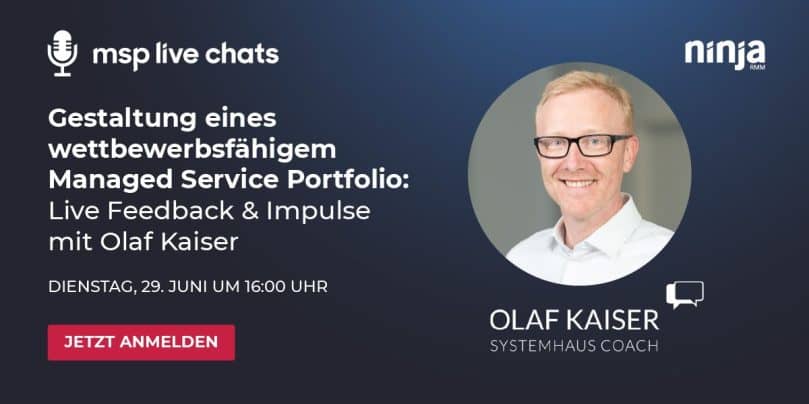

 “Whatever it is, you need to have a roadmap meeting and with luck, you will get your clients to start having regular meetings about their technology. And this is an opportunity more than has existed in many, many years.”
“Whatever it is, you need to have a roadmap meeting and with luck, you will get your clients to start having regular meetings about their technology. And this is an opportunity more than has existed in many, many years.”